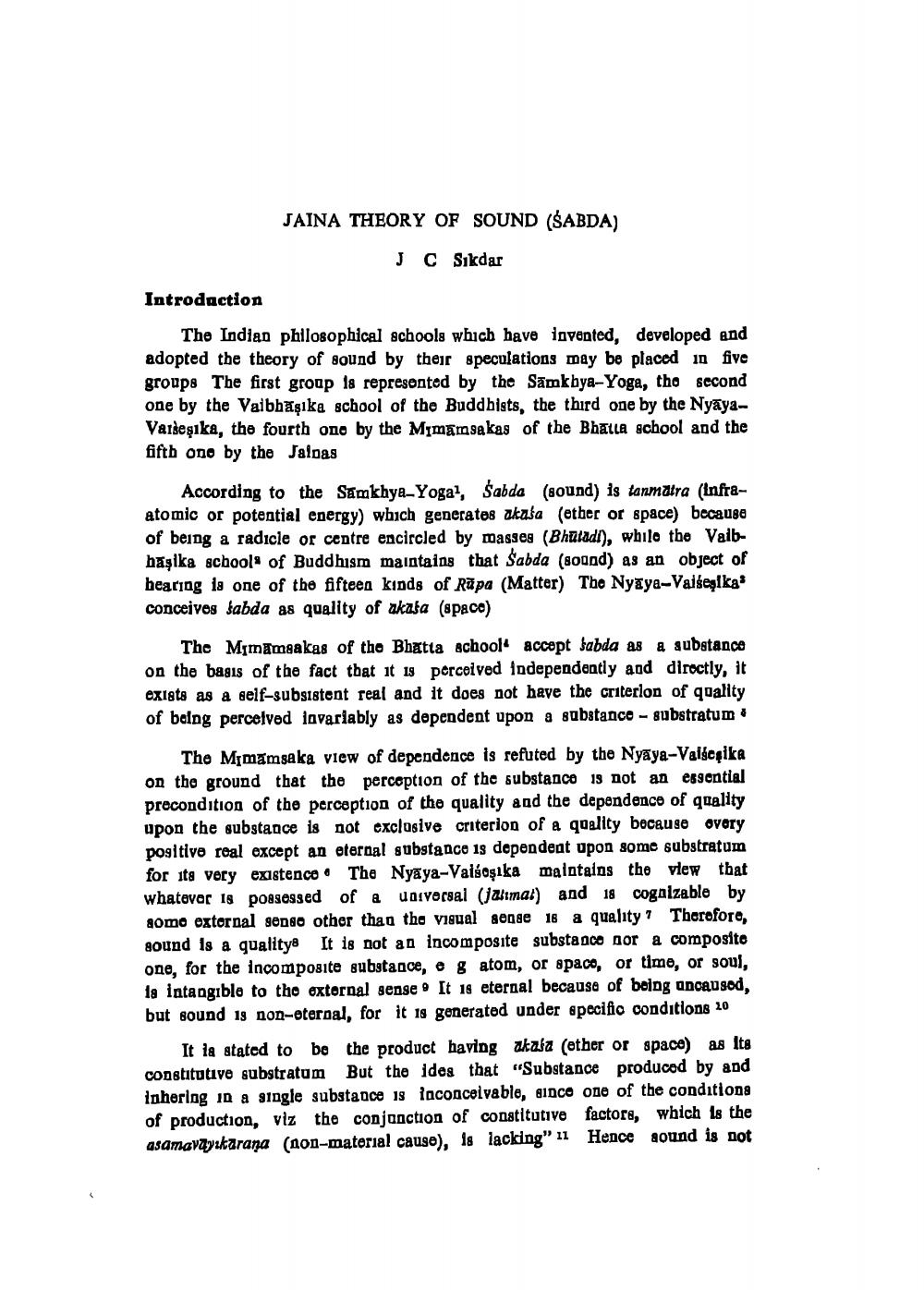________________
JAINA THEORY OF SOUND (SABDA)
JC Sikdar Introduction
The Indian philosophical schools which have invented, developed and adopted the theory of sound by their speculations may be placed in five groups The first group 18 represented by the Samkhya-Yoga, the second one by the Vaibbaşıka school of the Buddhists, the third one by the NyāyaVardeşika, the fourth one by the Mimamsakas of the Bhalla school and the fifth one by the Jalpas
According to the Samkhya-Yoga?, Sabda (sound) is tanmatra Infraatomic or potential energy) which generates akata (ether or space) because of being a radicle or centre encircled by masses (Bhutad), while the Vaibbasika school of Buddhism maintains that Sabda (80dnd) as an object of hearing is one of the fifteen kinds of Rāpa (Matter) The Nyuya-Valseşlka: conceives sabda as quality of akata (space)
The Mimimaakas of the Bhatta school accept Sabda as a substance on the basis of the fact that it is perceived independently and diroctly, it exists as a self-subsistent real and it does not have the criterion of quality of being perceived lavariably as dependent upon a substance - substratum
The Mimamsaka view of dependence is refuted by the Nyaya-Valserika on the ground that the perception of the substance 18 not an essential precondition of the perception of the quality and the dependence of quality upon the substance is not exclusive criterion of a quality because ovory positive real except an eternal substance is dependeat upon some substratum for its very existence The Nyaya-Vaišoşika maintains the view that whatever 18 possessed of a universal (jarimat) and 18 cogalzable by aomo external senso other than the vigual sense 18 a quality? Therofore, sound is a quality It is not an incomposite substance aor a composito one, for the incomposite substance, e gatom, or space, or timo, or soul, 1a intangible to the external sense . It 18 eternal because of being anggusod, but sound is non-eternal, for it is generated under specific conditions 20
It la atated to be the product having ataša (ether or space) as Its constitutive substratum But the idea that "Substance producod by and inhering in a single substance is laconceivable, since one of the conditions of production, viz the conjunction of constitutive factors, which is the asamaväyıkarana (non-material cause), is lacking" 11 Hence aound is not




